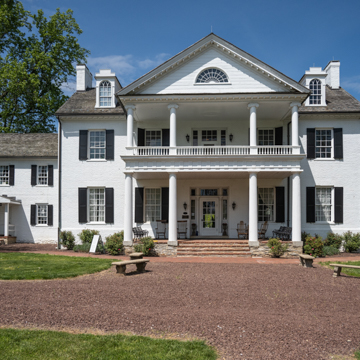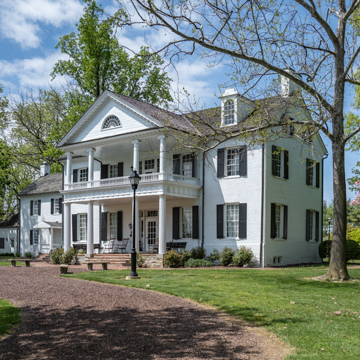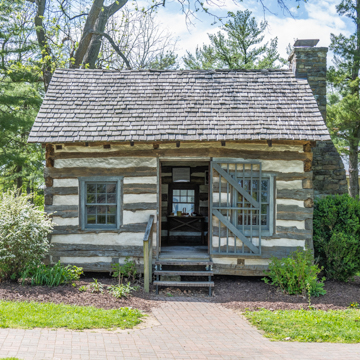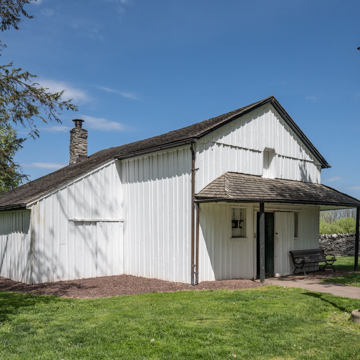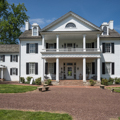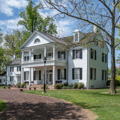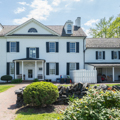Home of noted political dignitaries Thomas Johnson and John Grahame, Rose Hill combines classical and Greek Revival with vernacular traditions particular to the region. Likely part of mid-nineteenth-century renovations is the impressive two-story pedimented portico, while regional elements include its plainer service wing with beehive oven and Frederick “top-hat” dormers. Johnson was the first elected governor of Maryland and an associate justice of the U.S. Supreme Court. Rose Hill was built for his daughter Ann and her husband John Grahame and is where Johnson spent his retirement years. Grahame was a major in the Frederick County Militia and served in the Maryland legislature. Rose Hill is one of the few such stately, classically inspired houses in the area, along with Prospect Hall (c. 1810; 889 Butterfly Lane), the country home of John McPherson of Catoctin Iron Works. McPherson, who married Ann’s niece, purchased Rose Hill in 1833 ensuring Ann’s continued residence once widowed. Later owners, local businessman John Wilson and his wife Ann, undertook the Greek Revival renovations. The building served as an inn and tearoom on the tourist route to Gettysburg in the 1930s, and in 1968 was purchased as part of the county park system and opened for tours. Outbuildings include the c. 1746 log house built by settler Hans Peter Hoffman, a laundry and meat house, icehouse, and dairy barn.
You are here
ROSE HILL
If SAH Archipedia has been useful to you, please consider supporting it.
SAH Archipedia tells the story of the United States through its buildings, landscapes, and cities. This freely available resource empowers the public with authoritative knowledge that deepens their understanding and appreciation of the built environment. But the Society of Architectural Historians, which created SAH Archipedia with University of Virginia Press, needs your support to maintain the high-caliber research, writing, photography, cartography, editing, design, and programming that make SAH Archipedia a trusted online resource available to all who value the history of place, heritage tourism, and learning.









